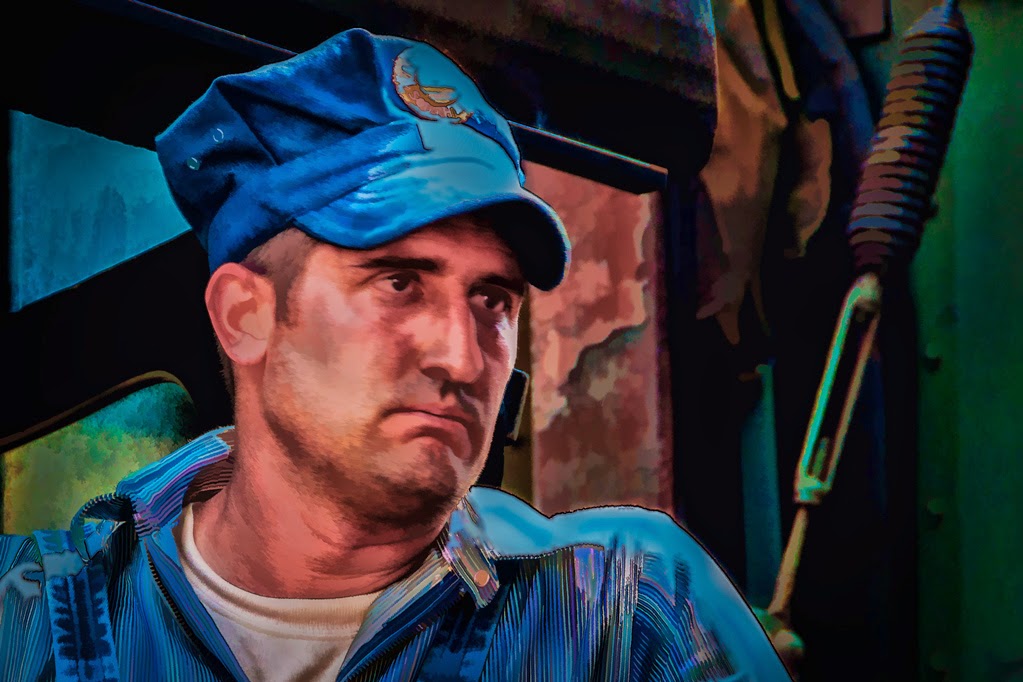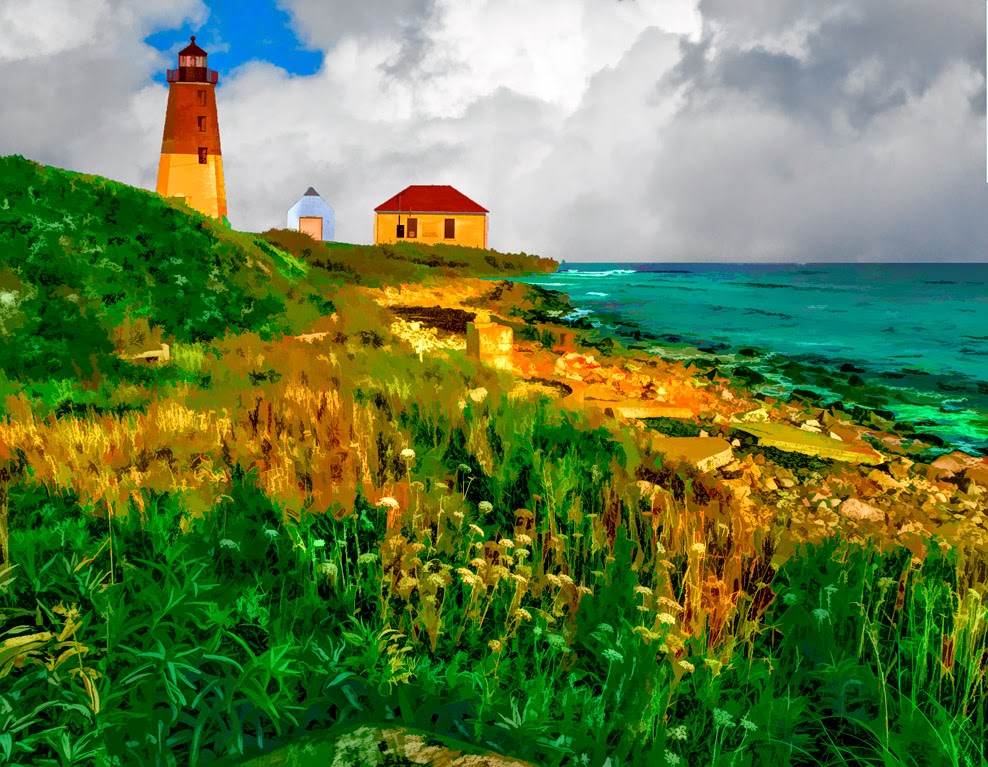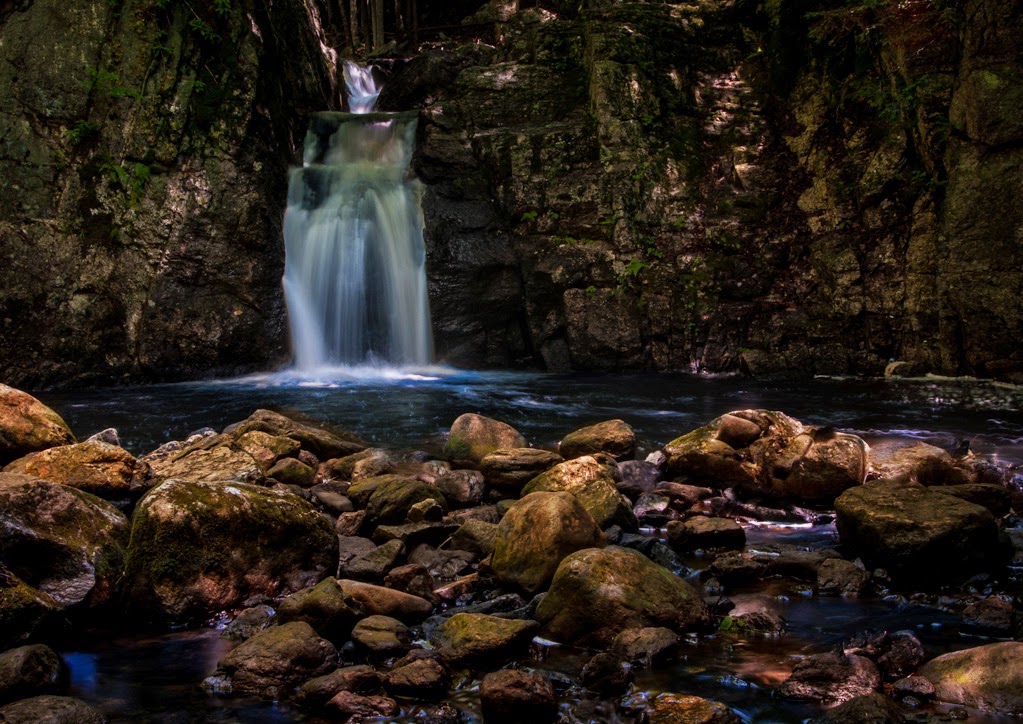skip to main |
skip to sidebar

People look at some of my work and compliment me on my "artwork". Okay, I think of it as art, but they're confusing it with paint, brushes, an easel and a pretty serious mess. The best I can do with "real" art is draw a stick figure, and maybe some people might have a hard time figuring that out. No, I'm a photographer who can't leave well enough alone. As I've said several times over the past few years, a properly exposed digital negative (which is actually a positive image) is the goal "in the camera". What happens after that is totally up to the mind of the maker. I've spoken about Bill Eppridge a couple times in the past. He was a photog for Life magazine in its heyday. His iconic image of a dying Robert F Kennedy is probably his most famous image. I attended a talk he gave one time. In it he showed the print that he said kickstarted his career. Follow the link (his name) and you'll see the image. It's a white horse in a meadow with a threatening sky. He won a national prize of some sort for the image and brought him to the attention of the photography power brokers of the day. During his talk he explained that he had spent the better part of an entire day in the darkroom, making print after print, refining his dodging and burning until he had the image he saw in his mind. The point is that what comes out of the camera is the start of the photographic process, not the end. Today's image is the end result of a "good" digital negative. How it got to it's present condition? Hit the "Read More" to find out.
Today's image started out just screwing around with a properly exposed, lackluster image. A nice memory of a train engineer. I've used several other images from the same shoot, but the shot of the engineer was trivial. Just a grab shot as I walked down along the train. After my "experiment" with Topaz Labs' (TL) Simplify (previous post) I went looking for other sorts of images that might "benefit" from a trip through LR Simplify. The engineer always had a stern look him and I could see removing a lot of the detail might make it stand out. The route to today's image is Adobe Photoshop Lightroom (LR) to TL Simplify to LR to Adobe Photoshop (PS) to LR. Each step was necessary to achieve specific goals.
Everything starts in LR. I use it exclusively for all my DAM (Digital Asset Management) work. It's where I store and find every image. It's also where I make my basic adjustment before shipping an image out to anything. It's sort of like a yoyo. You let the string out to other plugins or applications and pull it back for storage. Once any basic tasks were taken care of the image went out to TL Simplify. (Photo/Edit In/Fusion Express 2 (64 bit)/Simplify 2). From there I went through several iterations of the defaults to find a good starting place. I ended up in Harsh Color Painting (?). Some of the sliders were played with to get the "right" amount of simplification versus detail. Once satisfied the yoyo was wound back up on the spool and the image returned to LR.
I felt the details weren't strong enough, so I let the yoyo out again and sent the image to PS (Photo/Edit in/Open in Photoshop as a Smart Object). Two Curves Adjustment Layers were added. One for the Shadows and one for the Highlights. (Do a Google search on Scott Kelby to find out how to use this Dodging and Burning method.) I actually used two sets. One for the shirt and another set for his face. Every highlight was brightened and every shadow was deepened. This produces an "almost" three dimensional effect to the image. Once that was done it was time to pull back the yoyo again and have the doctored image retract back to LR (File/Save - File/Close).
Back in LR the "details" were corrected and/or added. The left shoulder of the shirt was blown out. Using the Adjustment Brush a similar color was "painted" on both the shirt and the cap. Shadows were added to both. Color adjustments were made using the HSL tab, taking some of the red out of his face. A little bit a Sharpening and a slight Vignette finished off the image.
Read more!

Topaz Labs (TL) just came out with a new version of it's Remask plugin. It's a free upgrade if you're already a Topaz Suite user and some minimal cost if you'd be interested in it as a stand alone. (With the suite pricing I can't imagine why anyone would pick and choose individual pieces.) I've really struggled with earlier versions of Remask, so I figured I'd download their newest and see what I thought. Not bad, much improved from what I've played with from them before. The caveat is that I can still do complex masks quicker using Adobe Photoshop (PS) Calculations if there's a lot of interior detail. (The sky showing through the leaves of a tree for example.) I tried a couple of "outline" only things (flowers, etc.) and the TL Remask does a very good job on those types of selections. While I was playing around with the Topaz Suite plugins I thought I'd take a look at a couple other pieces I've never played with. Today's image comes from TL's Simplify. I was pleasantly surprised, not that today's image is a simple as you might think. To find out why, hit the "Read More"
Read more!
Today's image is a little down stream from the site of the previous post. It was taken on the way to the falls, not after the fall down the falls. (See previous post.) You can see that there is a definite uphill component to the stream. As with all flowing water, there are drops and there are quiet spots. You can see one of the "quiet spots" toward the top of the image. Had I scrambled about fifteen yards upstream this would have been a shot of the pool, filled with reflections. The power of the water would have been lost in the apparent stillness. All the way up to the falls I took five shot sequences with one stop bracketing. Between last week's image and today's image neither area a result of HDR. To find out what I did to both images, hit the "Read More".
The "specs" on the shot are ISO 200, F 22 @ 1/2 second. The "companion" shots for HDR ranged from 1/4 second to 4 seconds. As you can see, the image is based on the one stop above the darkest image of the set. The big reason for that is that it was dark in there. The camera's meter bases what it thinks is a "proper" exposure by trying create a neutral gray average to the shot. When it reads a scene that it calculates to really dark, the camera adjusts upward. Therefore, the darkest shot (the 1/4 second shot) is still fairly bright compared to what the eye would see. Using one of the images from the longer exposures would have left blown out highlights.
As is noticeable, there are some bright areas and some darker areas in today's images. For me, this is a pretty straight image. It never made the trip from Adobe Photoshop Lightroom (LR) to Adobe Photoshop (PS). Now, that is unusual for an image from me. I'm typically adding, subtracting, multiplying or dividing something in an image that can't be done in LR. Not today! 100% LR. The boulders on each side of the stream were brightened. The green moss deepened, The color of the rocks warmed up using the Color space in the Adjustment Brush. I've found an amazing amount of control can be developed using that Color box. Once you get a shade of color that's semi close to what you're looking for you have all the "tools" (sliders) of the Adjustment Brush available to you. Not exactly the color you were thinking of? Use the Temperature and Tint sliders. Not a deep enough shade? Use Exposure, Highlights, Shadows, or Clarity to zero in on what you feel is ideal.
The water also took a hit using the Color block of the Adjustment Brush. The water was a nondescript sort of gray. No life to it at all. Giving it a little blue cooled the water off and made it look a slight bit more translucent. (Even though it isn't.) The quiet pool was hit with another Adjustment Brush pin and made a little greener to accent the reflection of the trees.
All told, about fifteen to twenty individual Adjustment Brush pins were dropped in various parts of the image. Getting a good digital negative, in camera, should be the goal of every photographer. Developing that digital negative into a useable image is what one section of post processing is all about. If Ansel Adams or Alfred Stieglitz, or Matthew Brady had had access to LR they would have embraced it in order to "develop" their images.
Read more!

Every once in a while it gets a little tricky to "get the shot". That was the case this past weekend. I'd read about a waterfall in Keene, New Hampshire. We were staying there after attending a conference in the area. Only problem was that no one in town seemed to know where this waterfall was. Asked the grizzled old timer at the gas station that was right out of the movie Deliverance. Even he didn't know what the heck I was talking about. Asked a cop. "No such place." I was told. Of course he looked like a high school kid, so tromping around the woods probably took a backseat to video games as he was growing up. We finally tracked it down. The access was at the end of a residential road. There was a trail marker with some information. The falls was about three quarters of a mile up an abandoned section of the road. So off we went with a pair of cargo shorts stuffed to the gills with filters, accessories, a cable release, $3.86 worth of change, packets of powdered lemonade (no water) and assorted items designed to weigh me down. To learn what today's title refers to, hit the "Read More".
Read more!








